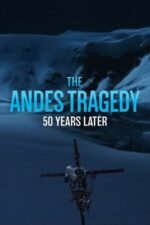Reaching for the Sky: Cinema and the Majesty (and Terror) of the Andes Mountains
Isn't it fascinating how landscapes can become characters in themselves? Think about Monument Valley in Westerns, or the Scottish Highlands in Braveheart. They’re not just backdrops; they shape the narrative, influence the mood, and often represent something larger than life. And few landscapes do that quite like the Andes Mountains. Towering, imposing, breathtakingly beautiful – and utterly unforgiving.
The films listed really highlight this duality. You've got The Andes Tragedy: 50 Years Later, a deeply moving documentary recounting the horrific plane crash of a Uruguayan rugby team in 1972. It’s not just about survival; it’s about confronting the raw, brutal power of nature and the agonizing choices people make when pushed to their absolute limits. Watching those survivors recount their experiences – hearing their voices against that stunning but desolate backdrop – is profoundly affecting. I remember reading about this event years ago, and seeing it brought to life on screen was a visceral experience; you really feel the weight of what they endured.
Then there's Alive, which dramatizes that same tragedy. While documentaries offer authenticity, dramas can explore the psychological toll in a way that’s often more accessible (though some might argue at the expense of nuance). It’s a tough watch, no doubt, but it grapples with profound questions about morality and what it means to be human when faced with unimaginable circumstances.
But the Andes aren't always synonymous with disaster. Los hieleros del Chimborazo, for example, offers a glimpse into a different kind of resilience – the generations-old tradition of ice harvesting in that region. It’s a beautiful and heartbreaking portrait of a community clinging to their heritage amidst modern pressures. It reminds you that these mountains aren't just a challenge; they are also inextricably linked to people's livelihoods and cultural identity.
Even In Search of the Castaways, a charming Disney adventure, uses the Andes as a canvas for youthful exploration and discovery. It’s lighter fare, certainly, but it still captures the sense of wonder and scale that these mountains inspire. And then there's Howard Hawks' Only Angels Have Wings. While not explicitly focused on the landscape itself, its setting in a remote South American port town nestled against those towering peaks creates an atmosphere of isolation and precariousness – mirroring the risks taken by the air freight pilots.
What all these films share is a recognition that the Andes are more than just scenery. They’re a force to be reckoned with, a symbol of both immense beauty and potential danger, and a constant reminder of humanity's place within the vastness of the natural world.
So, if you’re looking for something thought-provoking and visually stunning, I highly recommend exploring these films – just maybe keep a box of tissues handy!
























